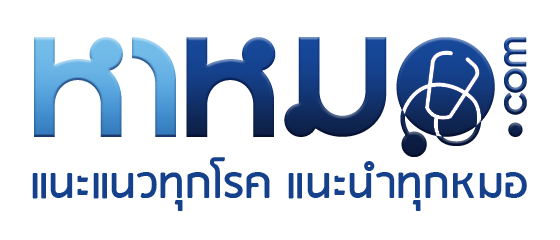
การจัดการภาวะแทรกซ้อนยาต้านรีโทรไวรัส ตอน 21
- โดย ภก.วิชญ์ภัทร ธรานนท์
- 31 ธันวาคม 2561
- Tweet

สาเหตุ
ยากลุ่ม NRTIs ที่ทำให้เกิดภาวะความผิดปกติของกล้ามเนื้อ หรือ myopathy คือ ซิโดวูดีน(zidovudine) ผู้ติดเชื้อจะมีอาการปวดกล้ามเนื้อโดยเฉพาะน่องหรือไหล่ อ่อนแรงโดยเฉพาะเวลาลุกจากเก้าอื้หรือเอื้อมหยิบของจากที่สูง ความผิดปกติของกล้ามเนื้อนี้ไม่ขึ้นกับจำนวน CD-4 เนื่องจากภาวะเป็นพิษต่อไมโทคอนเดรียที่ทำให้เกิดกล้ามเนื้ออักเสบ เมื่อตรวจร่างกายแล้วจะพบอาการเจ็บที่กล้ามเนื้อเล็กน้อยถึงปานกลาง อ่อนแรง โดยเฉพาะกล้ามเนื้อส่วนต้น เช่น หัวไหล่หรือสะโพก ไม่พบความผิดปกติของการรับรู้ความรู้สึกและรีเฟล็กซ์ โดยจะตรวจพบการเพิ่มขึ้นของค่า cratinine phosphokinase (CPK) และตรวจคลื่นไฟฟ้ากล้ามเนื้อจะพบลักษณะ irritable myopathy ยากลุ่มอื่นๆ เช่น ราลทิกราเวียร์ (raltegravir) ที่สามารถทำให้เกิดกล้ามเนื้ออ่อนแรง และภาวะกล้ามเนื้อลายสลาย (rhabdomyolysis)
การวินิจฉัย
การวินิจฉัยมักเกิดจากที่ผู้ติดเชื้อเอชไอวีสังเกตและรู้สึกตัวเองว่ามีรูปร่างหน้าตาที่ เปลี่ยนไปและแจ้งแพทย์ หรือแพทย์สังเกตเห็นได้ก่อนในกรณีที่มีอาการหรืออาการแสดงไม่มาก การตรวจยืนยันทางคลินิกด้วย การวัดความหนาของผิวหนัง การวัดเส้นรอบแขนหรือขา รวมถึงการทำภาพรังสีคอมพิวเตอร์ เอ็มอาร์ไอ และDual-energy X-ray absorptiometry (DXA) เพื่อตรวจปริมาณและตำแหน่งไขมันมักไม่ได้ทำในทางคลินิก เนื่องจาก ราคาแพงและไม่ได้ดีกว่าการวินิจฉัยด้วยอาการทางคลินิกและการตรวจร่างกาย การตรวจวัดเส้นรอบเอวและสะโพกเป็นอีกวิธีการหนึ่งที่ทำได้ง่ายเพื่อวินิจฉัยภาวะไขมันเกิน ถ้าอัตราส่วนระหว่างเส้นรอบเอวและสะโพกมากกว่า 0.95 ในผู้ชายหรือมากกว่า 0.85 ในผู้หญิงหรือการใช้เส้นรอบเอวอย่างเดียว คือ ตั้งแต่ 102 ซม.(40 นิ้ว) ขึ้นไปในผู้ชายหรือมากกว่า 88 ซม. (35 นิ้ว) ในผู้หญิง อาจจะช่วยในการวินิจฉัย
การป้องกัน
ทั้งนี้หากผู้ป่วยได้รับยาต้านรีโทรไวรัสอยู่ แล้วเกิดอาการไม่พึงประสงค์ดังกล่าว ข้างต้น หรือมีความผิดปกติอื่นๆ ควรรีบไปพบแพทย์โดยทันที
การรักษา
หยุดยาที่คาดว่าเป็นสาเหตุหรือเปลี่ยนยาอื่น ติดตามระดับ CPK ทุก 1 – 2 สัปดาห์ อาการและอาการแสดงและระดับ CPK ควรดีขึ้นภายใน 1 เดือน
บรรณานุกรม:
- Department of disease control, Thailand National Guidelines on HIV/AIDS Treatment and Prevention 2017. availavle from http://www.thaiaidssociety.org/images/PDF/ hiv_thai_guideline _2560.pdf.
- Cohen DE, Mayer KH. Primary care issues for HIV-infected patients. Infect Dis Clin N Am 21 (2007): 49–70.
- วีรวัฒน์ มโนสุทธิ. Current management of complication of antiretroviral therapy. ใน: ชาญกิจ พุฒิเลอพงศ์, ณัฏฐดา อารีเปี่ยม, แสง อุษยาพร, บรรณาธิการ. Pharmacotherapy in infectious disease VII. กรุงเทพมหานคร. สำนักพิมพ์แห่งจุฬาลงกรณ์มหาวิทยาลัย. 2558, หน้า 198-201.
- Group TISS. Initiation of Antiretroviral Therapy in Early Asymptomatic HIV Infection. New England Journal of Medicine. 2015;373(9):795-807.
- Group TTAS. A Trial of Early Antiretrovirals and Isoniazid Preventive Therapy in Africa. New England Journal of Medicine. 2015;373(9):808-22.
- Ayoko R. Bossou SC, Karen K. O’Brien, Catherine A. Opere, Christopher J. Destache. Preventive HIV Vaccines: Progress and Challenges. US Pharmacist. 2015 OCTOBER 16, 2015:46-50.
- รัชนู เจริญพักตร์ และ ชาญกิจ พุฒิเลอพงศ์. Current update on HIV/AIDs treatment guideline in 2017. ใน: ชาญกิจ พุฒิเลอพงศ์, โชติรัตน์ นครานุรักษ์, และ แสง อุษยาพร, บรรณาธิการ. Pharmacotherapy in infectious disease IX. กรุงเทพมหานคร. สำนักพิมพ์แห่งจุฬาลงกรณ์มหาวิทยาลัย. 2560, หน้า 342-364.
- Wada N JL, Cohen M, French A, Phair J, Munoz A. Cause-specific life expectancies after 35 years of age for human immunodeficiency syndrome-infected and human immunodeficiency syndrome-negative individuals followed simultaneously in long-term cohort studies, 1984-2008. Am J Epidermol. 2013; 177: 116-125.
- Department of Health and Human Services. Guidelines for the Use of Antiretroviral Agents in Adults and Adolescents Living with HIV Available from: https://aidsinfo.nih.gov/guidelines.
- O'Brien ME, Clark RA, Besch CL, Myers L, Kissinger P. Patterns and correlates of discontinuation of the initial HAART regimen in an urban outpatient cohort. Journal of acquired immune deficiency syndromes (1999). 2003;34(4):407-14.
- Kiertiburanakul S, Luengroongroj P, Sungkanuparph S. Clinical characteristics of HIV-infected patients who survive after the diagnosis of HIV infection for more than 10 years in a resource-limited setting. Journal of the International Association of Physicians in AIDS Care (Chicago, Ill : 2002). 2012;11(6):361-5.
- Wiboonchutikul S, Sungkanuparph S, Kiertiburanakul S, Chailurkit LO, Charoenyingwattana A, Wangsomboonsiri W, et al. Vitamin D insufficiency and deficiency among HIV-1-infected patients in a tropical setting. Journal of the International Association of Physicians in AIDS Care (Chicago, Ill : 2002). 2012;11(5):305-10.
- Wilde JT, Lee CA, Collins P, Giangrande PL, Winter M, Shiach CR. Increased bleeding associated with protease inhibitor therapy in HIV-positive patients with bleeding disorders. British journal of haematology. 1999;107(3):556-9.
- European AIDS Clinical Society. EACS Guidelines version 8.1-October 2016. Available from http://www.eacsociety.org/files/guidelines_8.1-english.pdf.
- ศศิโสภิณ เกียรติบูรณกุล. การดูแลรักษาผู้ติดเชื้อเอชไอวีแบบผู้ป่วยนอก.กรุงเทพฯ : ภาควิชาอายุรศาสตร์ คณะแพทยศาตร์โรงพยาบาลรามาธิบดี มหาวิทยาลัยมหิดล, 2557
- Morse CG, Mican JM, Jones EC, Joe GO, Rick ME, Formentini E, et al. The incidence and natural history of osteonecrosis in HIV-infected adults. Clinical infectious diseases : an official publication of the Infectious Diseases Society of America. 2007;44(5):739-48.
- Woodward CL, Hall AM, Williams IG, Madge S, Copas A, Nair D, et al. Tenofovir-associated renal and bone toxicity. HIV medicine. 2009;10(8):482-7.
- Wang H, Lu X, Yang X, Xu N. The efficacy and safety of tenofovir alafenamide versus tenofovir disoproxil fumarate in antiretroviral regimens for HIV-1 therapy: Meta-analysis. Medicine. 2016;95(41):e5146.
- Redig AJ, Berliner N. Pathogenesis and clinical implications of HIV-related anemia in 2013. Hematology American Society of Hematology Education Program. 2013;2013:377-81.
- Assefa M, Abegaz WE, Shewamare A, Medhin G, Belay M. Prevalence and correlates of anemia among HIV infected patients on highly active anti-retroviral therapy at Zewditu Memorial Hospital, Ethiopia. BMC Hematology. 2015;15:6.
- de Gaetano Donati K, Cauda R, Iacoviello L. HIV Infection, Antiretroviral Therapy and Cardiovascular Risk. Mediterranean Journal of Hematology and Infectious Diseases. 2010;2(3):e2010034.
- Group TDS. Class of Antiretroviral Drugs and the Risk of Myocardial Infarction. New England Journal of Medicine. 2007;356(17):1723-35.
- Tsiodras S, Mantzoros C, Hammer S, Samore M. Effects of protease inhibitors on hyperglycemia, hyperlipidemia, and lipodystrophy: a 5-year cohort study. Archives of internal medicine. 2000;160(13):2050-6.
- วราภณ วงศ์ถาวราวัฒน์. Diagnosis and classification of Diabetes Mellitus. ใน: ธิติ สนับบุญ, บรรณาธิการ. แนวทางเวชปฏิบัติทางต่อมไร้ท่อ. กรุงเทพมหานคร.โรงพิมพ์แห่งจุฬาลงกรณ์มหาวิทยาลัย. 2560, หน้า 1-9.
- ชาญกิจ พุฒิเลอพงศ์. Clinical management for dyslipidemia in HIV-infected patients. ใน: ชาญกิจ พุฒิเลอพงศ์ และ ณัฏฐดา อารีเปี่ยม, บรรณาธิการ. Pharmacotherapy in infectious disease VI. กรุงเทพมหานคร. คอนเซ็พท์พริ้นท์. 2557, หน้า 198-201.
- Dube MP, Stein JH, Aberg JA, Fichtenbaum CJ, Gerber JG, Tashima KT, et al. Guidelines for the evaluation and management of dyslipidemia in human immunodeficiency virus (HIV)-infected adults receiving antiretroviral therapy: recommendations of the HIV Medical Association of the Infectious Disease Society of America and the Adult AIDS Clinical Trials Group. Clinical infectious diseases : an official publication of the Infectious Diseases Society of America. 2003;37(5):613-27.
- Hoffman RM, Currier JS. Management of antiretroviral treatment-related complications. Infectious disease clinics of North America. 2007;21(1):103-32, ix.
- Husain NEOS, Ahmed MH. Managing dyslipidemia in HIV/AIDS patients: challenges and solutions. HIV/AIDS (Auckland, NZ). 2015;7:1-10.
- Kiertiburanakul S, Sungkanuparph S, Charoenyingwattana A, Mahasirimongkol S, Sura T, Chantratita W. Risk factors for nevirapine-associated rash among HIV-infected patients with low CD4 cell counts in resource-limited settings. Current HIV research. 2008;6(1):65-9.
- Murphy RL. Defining the toxicity profile of nevirapine and other antiretroviral drugs. Journal of acquired immune deficiency syndromes (1999). 2003;34 Suppl 1:S15-20.
- Department of Health and Human Services. HIV and Lactic Acidosis. Available from: https://aidsinfo.nih.gov/understanding-hiv-aids/fact-sheets/22/68/hiv-and-lactic-acidosis.
- Grinspoon S, Carr A. Cardiovascular Risk and Body-Fat Abnormalities in HIV-Infected Adults. New England Journal of Medicine. 2005;352(1):48-62.
- Simpson D, Estanislao L, Evans S , McArthur J, Marcusd K, Truffa M et,al. HIV-associated neuromuscular weakness syndrome. AIDS (London, England). 2004;18(10):1403-12.
- Hall AM, Hendry BM, Nitsch D, Connolly JO. Tenofovir-associated kidney toxicity in HIV-infected patients: a review of the evidence. American journal of kidney diseases : the official journal of the National Kidney Foundation. 2011;57(5):773-80.
- Chaisiri K, Bowonwatanuwong C, Kasettratat N, Kiertiburanakul S. Incidence and risk factors for tenofovir-associated renal function decline among Thai HIV-infected patients with low-body weight. Current HIV research. 2010;8(7):504-9.
- Schwarzwald H, Gillespie S. Management of Antiretroviral-Associated Complications. Available from: https://bipai.org/sites/bipai/files/5-Mgt-assoc-complications.pdf
- ศศิโสภิณ เกียรติบูรณกุล. Practical management of complication-associated with ARVใน: นารัต เกษตรทัต, ชาญกิจ พุฒิเลอพงศ์ และ ณัฏฐดา อารีเปี่ยม, บรรณาธิการ. Pharmacotherapy in infectious disease VI. กรุงเทพมหานคร. คอนเซ็พท์พริ้นท์. 2554, หน้า 317-346.


